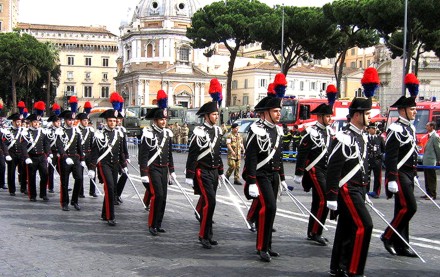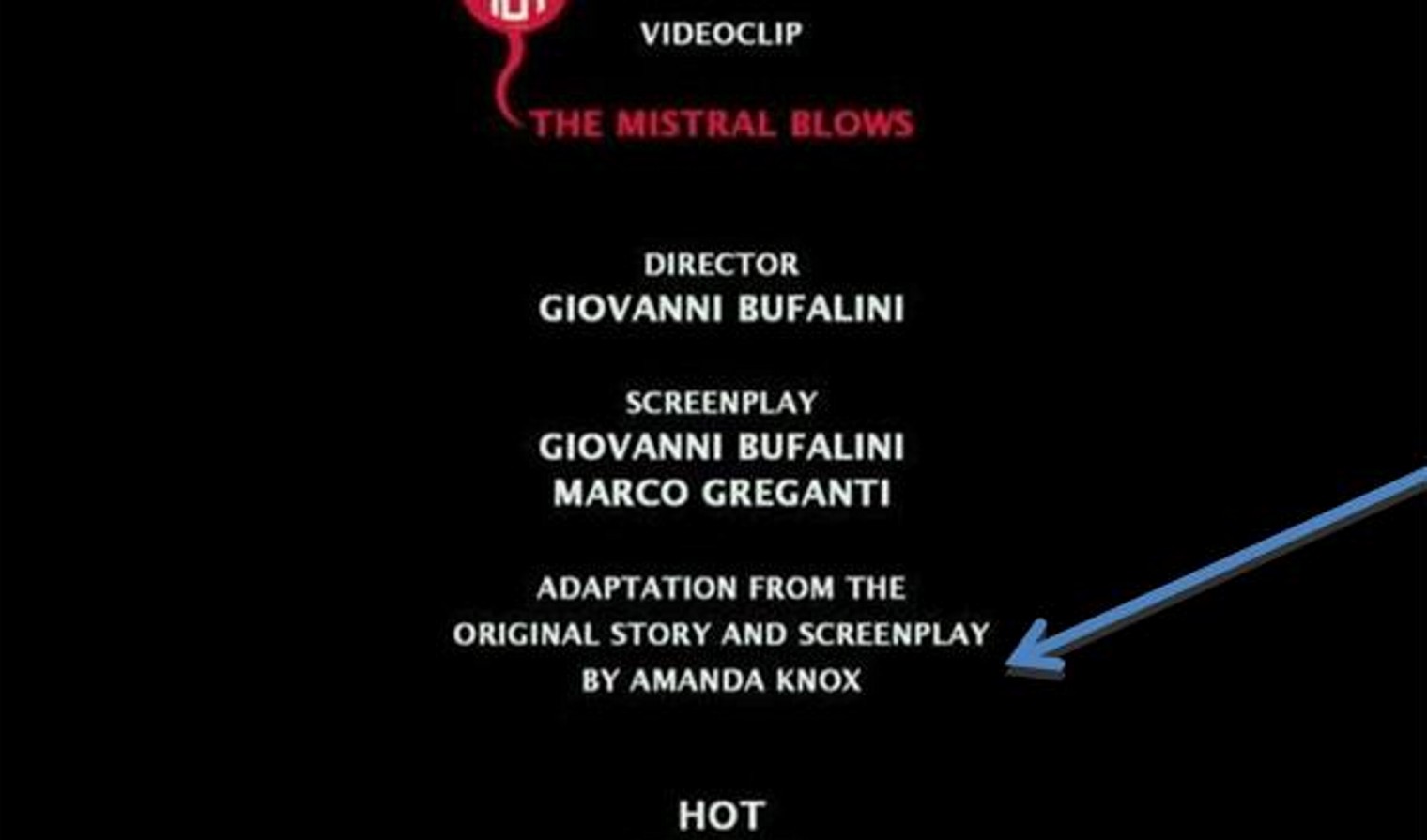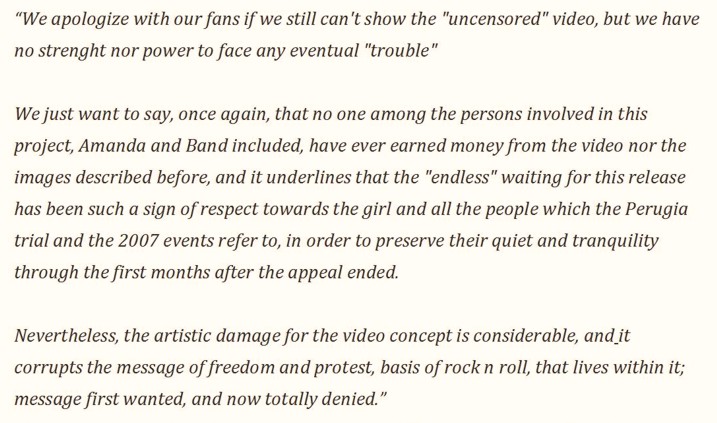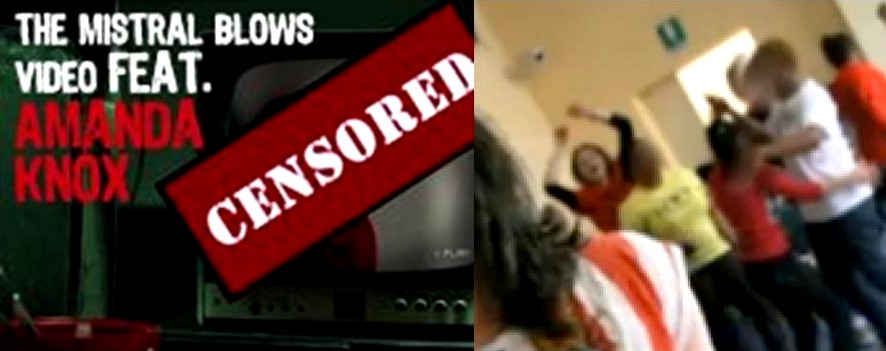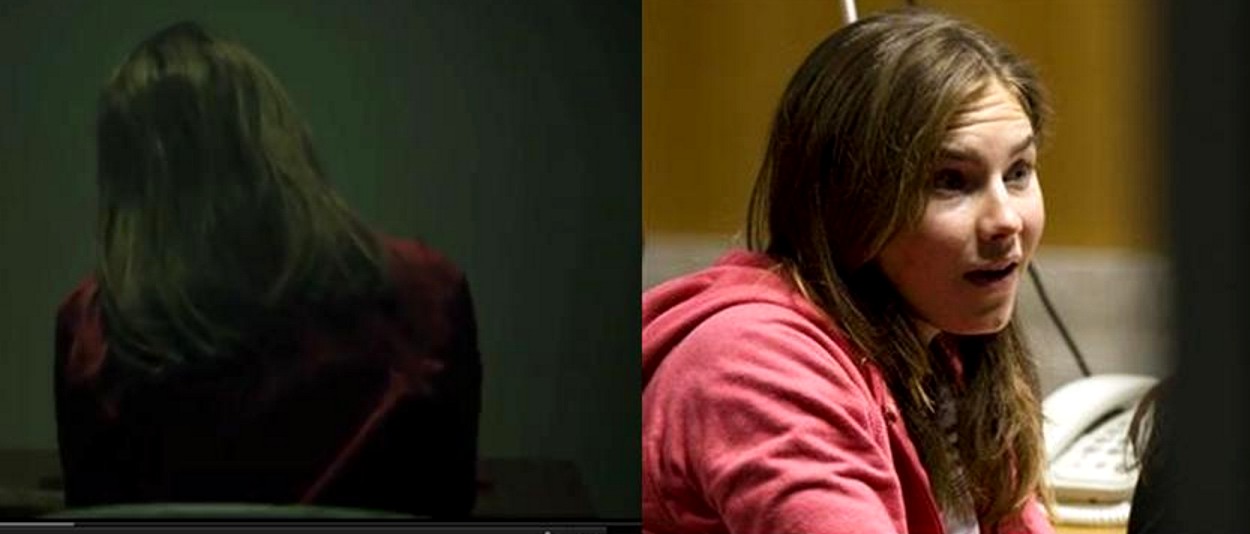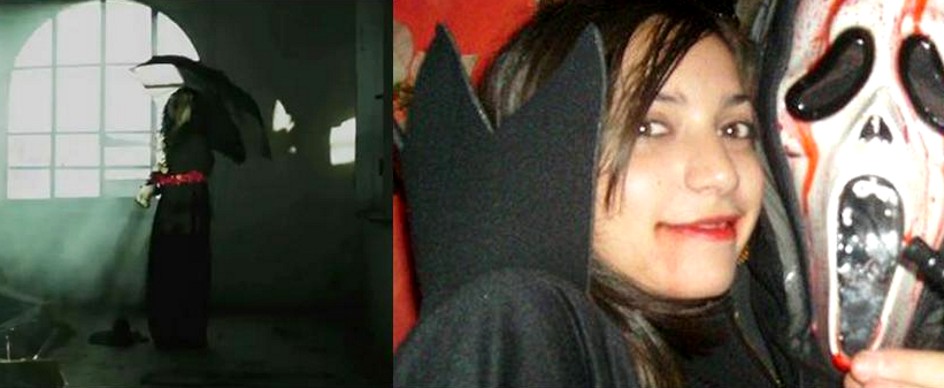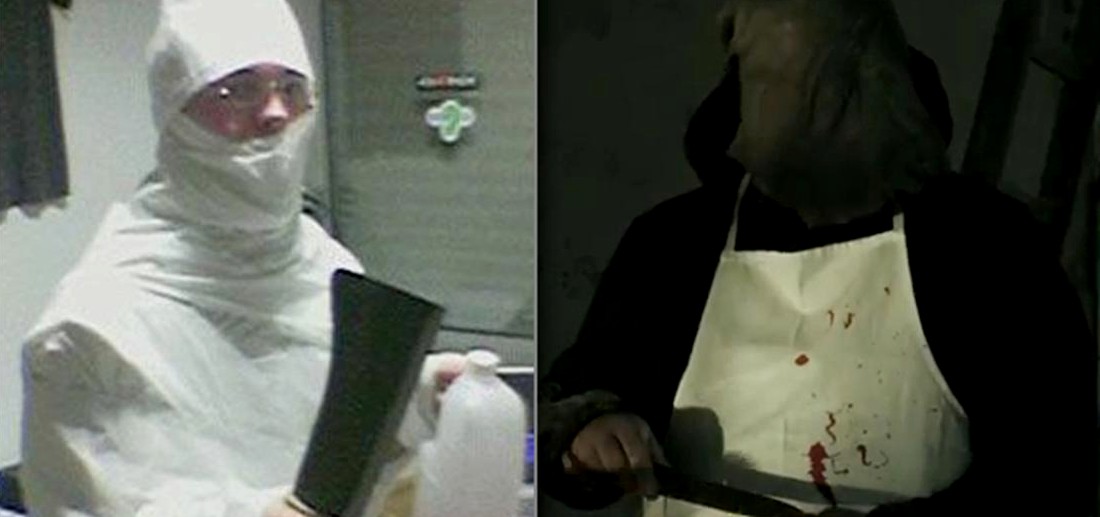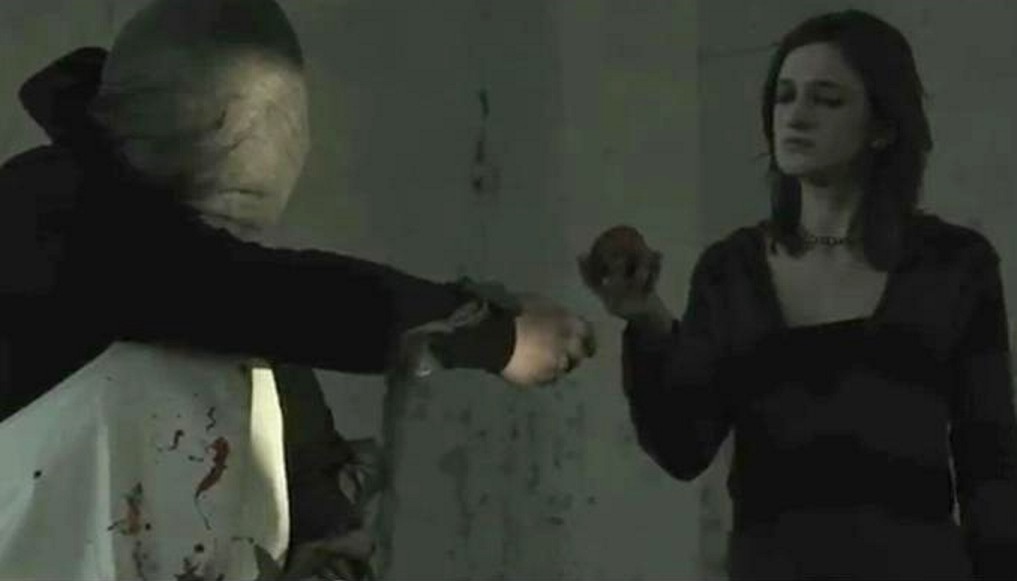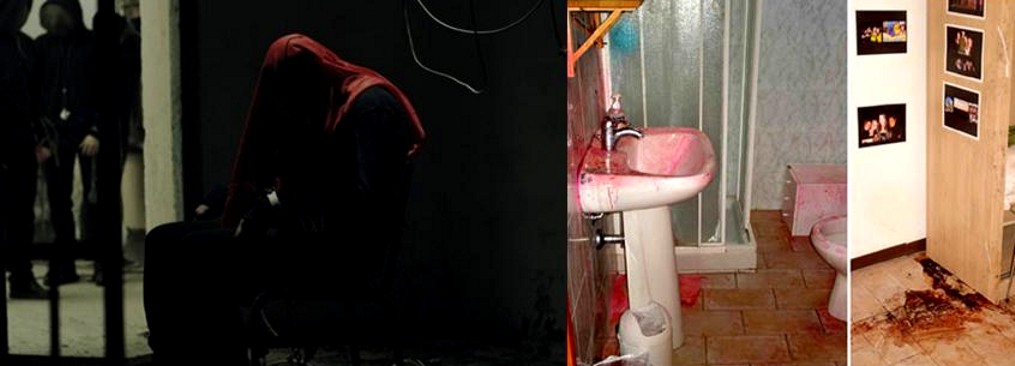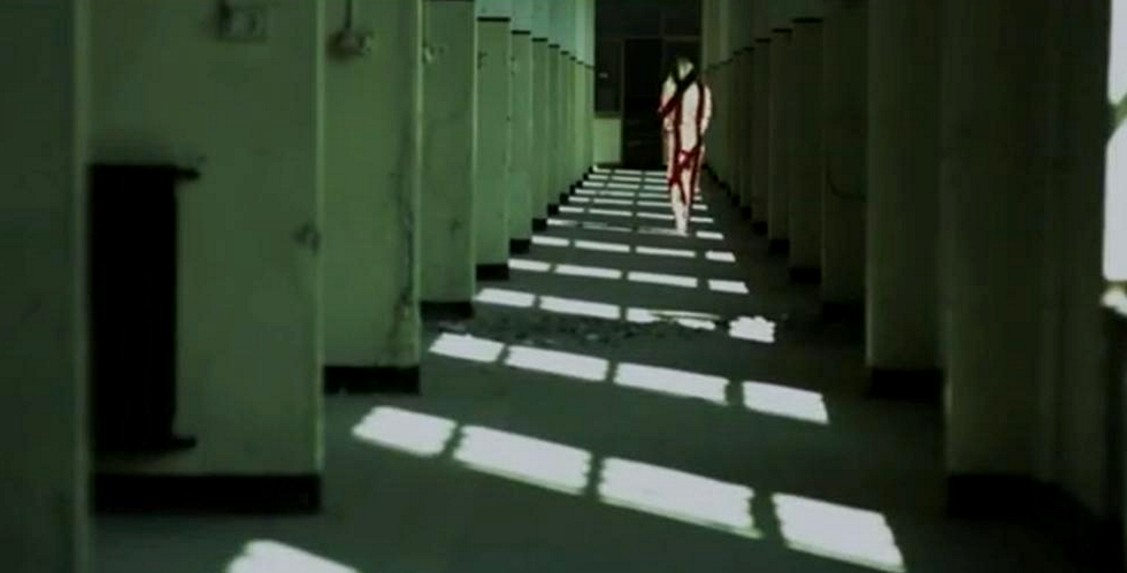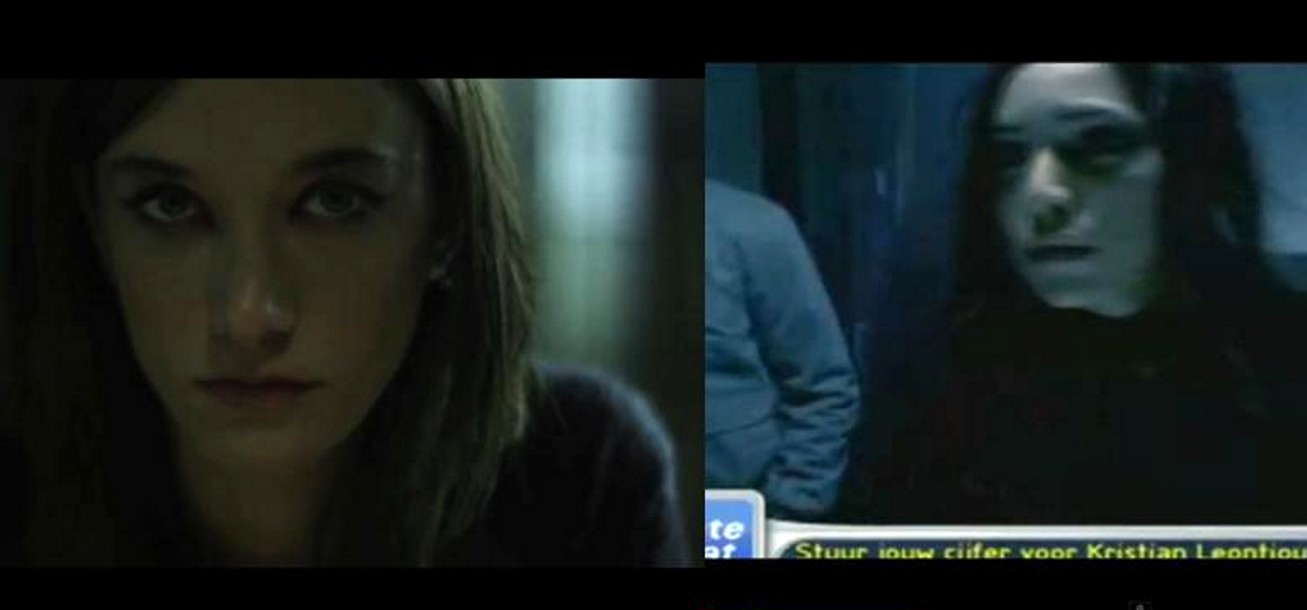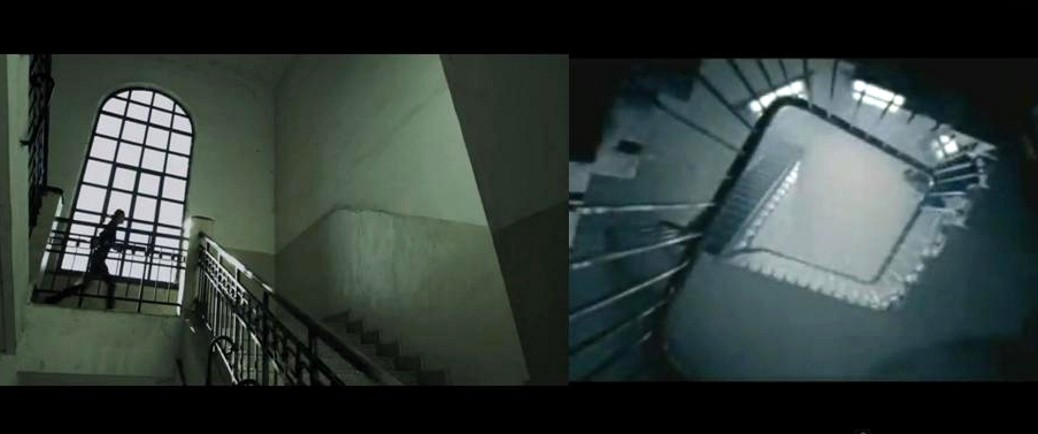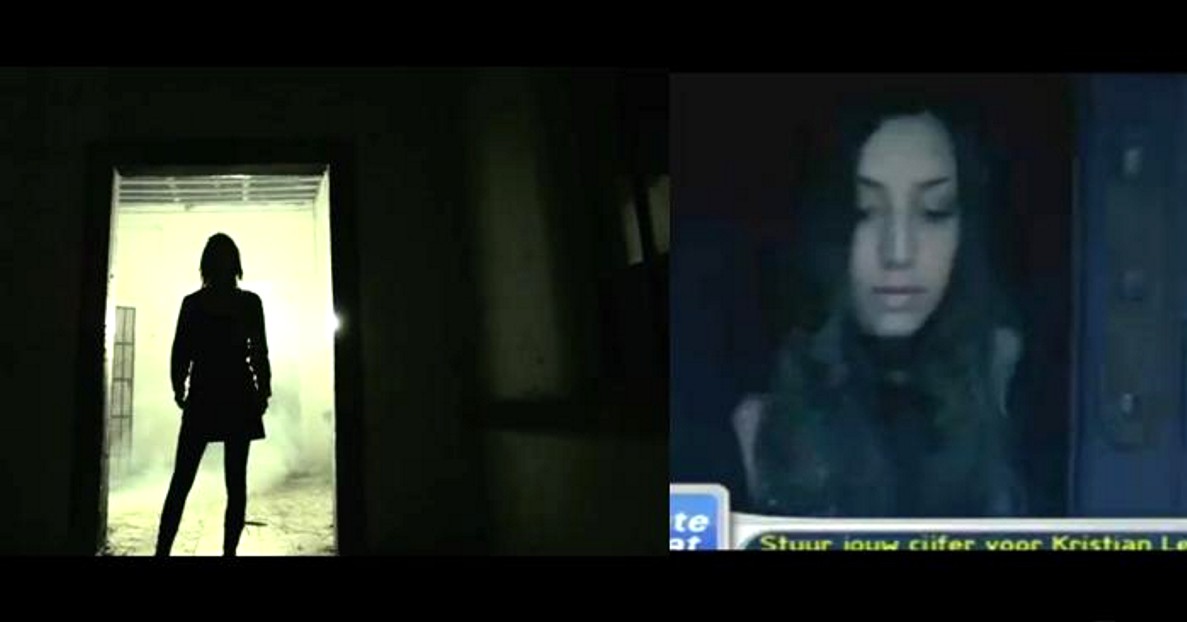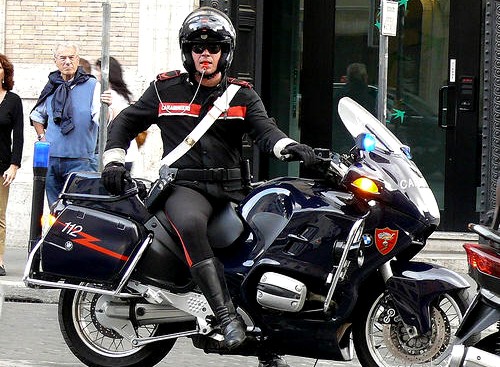
Political & economic headsup: US is demonstrating unsorted systems problems in spades. Do watch your investments. As Washington DC policy gets more & more off-target, big New York investors are betting very heavily that stocks will soon crash. Gross systems mismanagement 2017-20 tanked stocks several times.
Friday, July 27, 2012
Heads-Up To The Amanda Knox Forces: A Case Showing How Closely The US and Italian FBIs Co-operate
Posted by Peter Quennell
Meet Doctor Mark Weinberger.
That report about his arrest in Italy was broadcast in 2009. We last posted on him here.
Weinberger was apparently a wildly successful doctor who ran a sinus clinic in Indiana and lived a wildly affluent lifestyle a few milers north outside Chicago. In 2004 he disappeared off his large yacht which was then anchored at a Greek marina, and for six years his (very impressive) wife Michelle presumed he was dead.
In the meantime she had found out that he had actually been running a huge fraud, scamming health insurance and the US government via false billing and unnecessary surgery (often botched) for many millions. And that far from being left comfortably off, she was financially wiped out.
In 2006 in absentia she divorced Weinberger and started over.
In 2009 Weinberger was captured in the Alps by the Italian equivalent of the FBI and returned to the United States as soon as his extradition was requested. In perhaps 99 percent of all US-Italian extradition cases, the fugitives are handed over by both governments very promptly. This sure wasn’t any exception.
Weinberger began to lose the first of numerous civil suits a year ago, and on wednesday he pleaded guilty to 22 criminal charges in federal court.
His prison term is set at ten years.
One moral of the tale apparently still not learned by Steve Moore and Bruce Fischer and their hapless ship of fools, so desperate for approbation, is this: much or most of the time it is the fine Italian equivalent of the FBI that they are misrepresenting and defaming.
In the past two weeks alone, we have seen new ramblings by Saul Kassin and Nigel Scott (engineered by Bruce Fischer) that to any informed lawyer are quite crazy. Kassin and Scott clearly didnt have the slightest idea WHO they were defaming or accusing of crimes.
Or how much more determined thier defaming makes the Italian FBI and other law enforcement agencies and the courts to give Amanda Knox (or Curt Knox or Edda Mellas) no special breaks.
The daffy Steve Moore first introduced this confusion way back here. And of course Bruce Fischer, Curt Knox’s hotheaded chief hatchet man, sustains it up to this day.
Eighteen months ago, Chris Mellas (whose business in Seattle is doing well) sensibly recommended from Perugia that the Knox campaign should finally acquire some cool heads and some REAL experts, and toss the trouble-making grand-standers they had acquired over the side.
Perhaps predictably, Curt Knox (whose business in Seattle is doing badly) reacted red-faced and steaming, and shot this seemingly quite smart idea down. So the abrasive, misleading, very amateur campaign goes on.
***
Added. We are now told that Frank Sforza and David Anderson are in Seattle, and Sollecito will be there soon, to actually jack up the level of defaming in the RS and AK “we were the victims” books being written.
Wow. THAT is Curt Knox’s end-game?l He ran that one past Chris Mellas? It seems universally believed in officialdom in Rome and Perugia that Curt Knox KNEW all along that Amanda did it. Apparently with good evidence.
What will he do if they charge him?
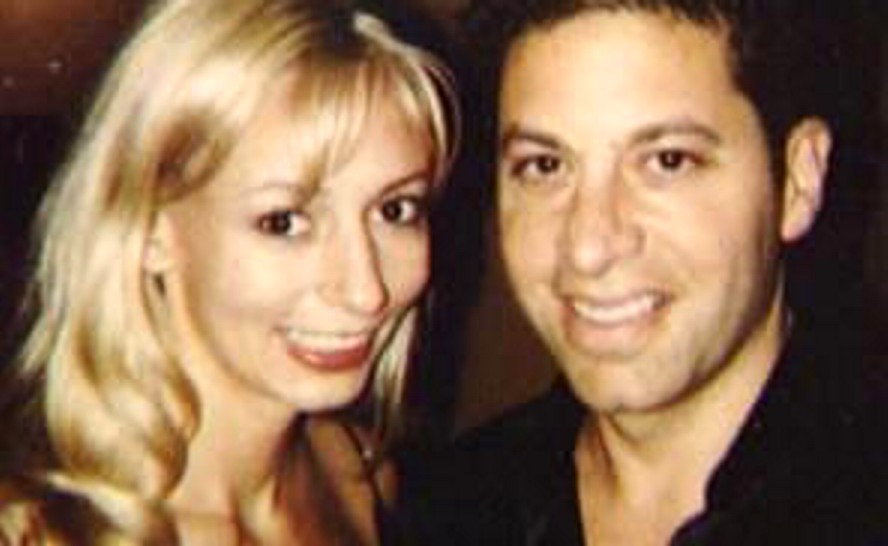
Wednesday, July 25, 2012
European Rock Singer Timo Rusanen’s Great Rock Tribute To Meredith
Posted by Peter Quennell
Postscript: View of Timo’s vidoe exceded 100,000 by 2017.
Tuesday, July 24, 2012
Dissecting The Hellmann Report #2: How Judges Zanetti And Hellman Tilted The Legal Playing Field
Posted by Cardiol MD
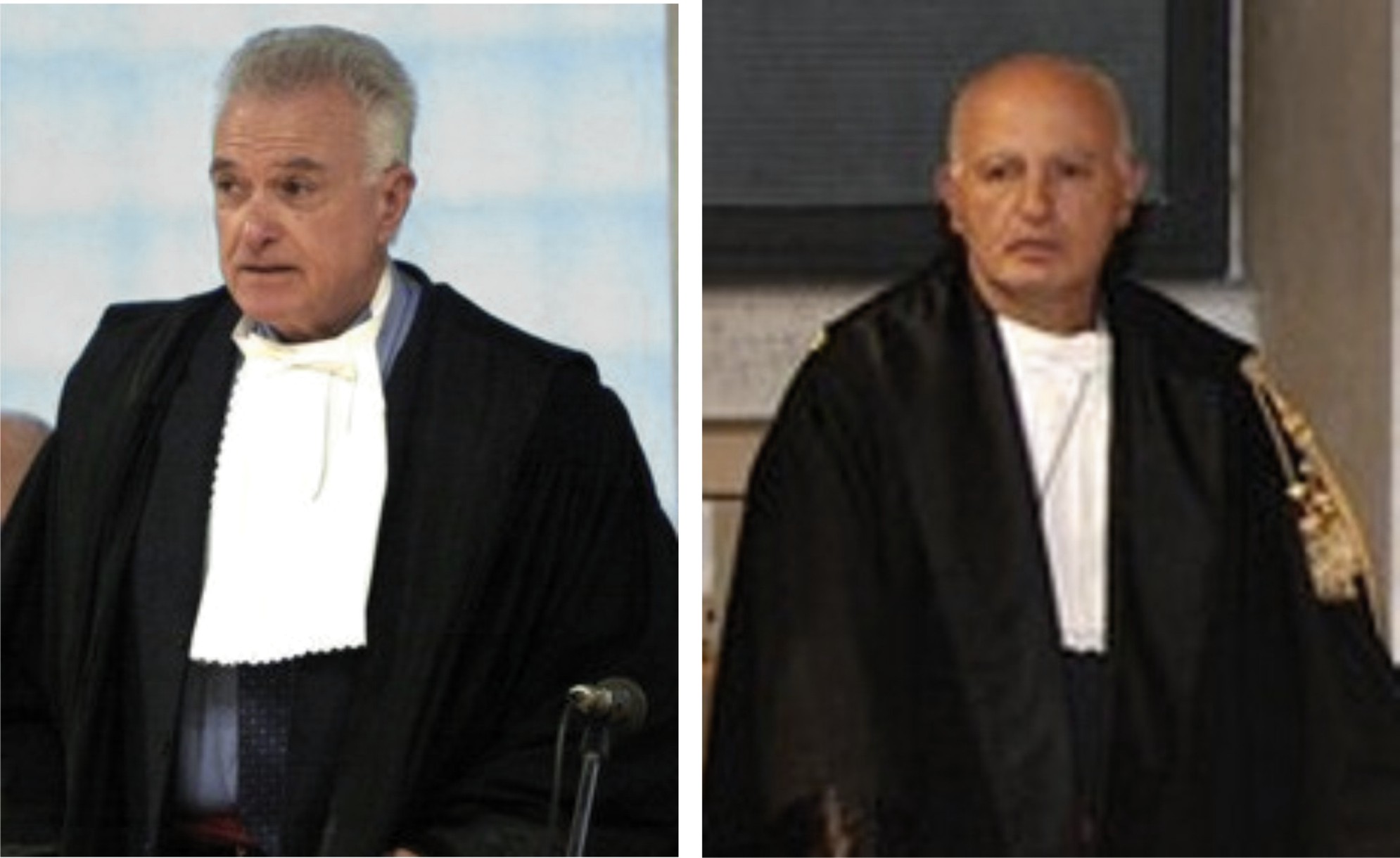
The Calunnia section of the Hellmann Report is about 4 pages in a 94 page document and it covers the Knox framing of Lumumba.
The Calunnia section was used in the first post of my series (“Dissecting The Hellmann Report #1: Highlighting Representative Examples Of Its Many Bizarre Quirks” ) to demonstrate the weaknesses typical of the whole report
Following publication of that post, it was kindly brought to our attention that the contributions of Assistant Judge Zanetti were so extensive - the report is said to be argued and written throughout in his style, and far from Judge Hellmann’s - that it should be called The Hellmann/Zanetti Report.
Post #1 exemplified, among other defects, some Orwellian DoubleThink from Hellmann/Zanetti:
Early in Calunnia, on Report page 22, Hellmann/Zanetti attribute Knox’s inconsistent, and incriminating, often illogical, falsehoods and behaviours, to Knox’s confusion caused by prosecutorial oppression, from which, by unspoken implication, guilt cannot be inferred, Hellmann/Zanetti informs its readers.
However, on page 23, still in Calunnia, Hellmann/Zanetti admonishes the reader not to infer any implication of guilt from the Knox falsehood that was the very subject of Calunnia, because the falsehood “is in fact not at all logical”.
The two relevant passages, using very convoluted language, “constructively” argue:
- Firstly, that if Knox uttered any falsehoods (including illogical falsehoods) it was because of prosecutorial oppression, is not evidence of guilt, and,
- Secondly, that if Knox uttered any illogical falsehoods, with or without prosecutorial oppression, it was because Amanda would not say anything illogical if it was easier to tell the truth than to tell something illogical, and is also not evidence of guilt.
Among the specific defects in the Hellmann/Zanetti Report, exemplified in its Calunnia section were the Report’s ploy of flooding the discussion of each evidentiary element with real and imagined reasons-to-doubt the significance of each element.
Report #1 also mentioned the issue of whether Meredith did scream just before she died, and if so when Meredith screamed.
Hellmann/Zanetti’s endemic use of the word “certain” revealed a biased perspective, as if “certain” (as in “beyond doubt”), is Hellmann/Zanetti’s equivalent to “beyond a reasonable doubt”.
This post in my series, “Dissecting The Hellmann Report #2”, focuses on the whole Report’s constructive substitution of “certain” for “beyond a reasonable doubt”:
First we take into account a semantic quirk: In the English language the word “certain” is used in multiple senses. In the Italian language, its Italian-equivalent the word “certo” is used in a much narrower sense.
Generally, when absence-of-doubt is intended, a verb-sense is used e.g. “It is certain”. In contrast when a figure-of-speech-sense is intended an adjectival or other modifier-sense is used e.g. ”“¦a certain smile”¦”.
The Hellmann/Zanetti English translation-draft uses both of these senses.
It uses the figure-of-speech sense 12 times, but where the absence-of-doubt sense is constructively intended, it uses forms like “certainly” (41 times), “certain” (36 times), and “certainty” (11 times), for a total of 88 times.
Other ways of expressing certainty are also used.
Judge Zanetti is the one who made “opening statements” variously reported to have been “”¦nothing is certain except the death of Meredith Kercher.”, or “”¦ the only fact that is objectively certain, indisputable and that has not been discussed is the death of Meredith Kercher”.
Neither version of Judge Zanetti’s “opening statements” appears in the Hellmann/Zanetti English translation-draft, although the draft does include references informing the reader that the report contains an error (see footnotes 2 & 3 in the draft, on pp 18 & 19)
The Chief Prosecutor, Dr Galati, both in his Appellate Brief for the Supreme Court and in his oral statement at his press conference, excoriated Judge Zanetti for his start-of-trial remarks:
The second-level [first appeal] judges appear to have shown “a sort of prejudice” with the “infelicitous preamble of the judge [the author], who is supposed to be impartial”, when he declared that “nothing is certain except the death of Meredith Kercher”, which to the others [Mr Galati and Mr Costagliola] is nothing more than “a resounding preview/forecast of the judgement” and a “disconcerting” affirmation.”
Here are some examples, emphases are mine :
Page 12 ““ “It is clear that if, for the sake of argument, the DNA found on the clasp is actually Raffaele Sollecito’s, this [piece of] evidence, while yet remaining such, is of particular significance: and the same can be said for the DNA found on the handle and on the blade of the knife seized at Raffaele Sollecito’s house, provided it is certain that this is actually one of the weapons used by the aggressors.”
Hellmann/Zanetti’s 1st explicit use of the idea of certainty, in the printed document, using a qualified “provided it is certain”.
Pages 16-17:
...About the footprints, they observe that those recovered from the inside of the residence reveal the presence of Amanda Knox and Raffaele Sollecito at the scene of the crime. These are prints that in the scientific view cannot be classed as usable for positive comparisons but, however, are useful for negative comparisons, in the sense that, based on these prints one cannot reach a certain identification [23] but one can, however, arrive at a certain exclusion on the basis of the compatibility, or not, of these prints with a specific subject.
The Scientific Police (Inspector Rinaldi and Chief Inspector Boemia) were able, thus, to exclude that the footprints could be attributed, in contrast to the shoe prints, to Rudy Guede, while they were judged compatible with the characteristics of Amanda Knox (imprints recovered from her room and from the corridor) and of Raffaele Sollecito (imprints recovered from the small mat in the bathroom and in the corridor).
Hellmann/Zanetti here argue that the idea of ”˜certainty’ is asymmetric (my paraphrase), it may not justify certain inclusion, because of its mere compatibility, but it may justify certain exclusion because of its incompatibility.
This is valid and historically well-accepted; Massei had already said so.
Pages 20-21:
And so, the re”examination of the outcomes from the first instance trial, and the subsequent acquisitions [of evidence] during oral argument in the current appeal, do not confirm the hypothesis that more than one person was necessarily involved in the crime.
This hypothesis, as appears from a reading of the December 22, 2009 judgement, was shaped by substantially accepting all the arguments presented by the Prosecution and in particular holding the following items to be certain:
““ that the DNA, recovered by the Scientific Police from the bra”clasp in the murder room, be attributed to Raffaele Sollecito and that this DNA had been left behind precisely during the occasion of the murder; [28]
““ that the DNA, recovered by the Scientific Police from the blade of the knife seized in Raffaele Sollecito’s house, be attributed to Meredith Kercher and that it had been left behind during the occasion of the murder;
““ that the wounds present of the body of Meredith Kercher, by their number and their directions, as also by their various characteristics (length of wound, width, etc.), could not have been occasioned by a sole aggressor but by multiple aggressors;
““ that the absence of defensive wounds on Meredith Kercher’s hands and arms confirm the necessary participation of more than one person in the aggression; ““ that the ingress into the interior of the via della Pergola apartment had been allowed by the only person who, in that moment ““ apart from Meredith Kercher ““ had the means of doing so, that is to say, by Amanda Knox, the Court of Assizes of Appeal having held that the ingress through the window, by means of breaking of the glass, was no more than a mise”en”scène to falsely lead the investigations towards unknown authors of an attempted theft.”
Hellmann/Zanetti here lay a reasonably neutral factual-foundation, before launching their attack.
Page 30. re [42] Defense-witness-statements of Alessi, Aviello, Castelluccio, De Cesare, Trincan:
“¦.If these testimonies cannot be considered as evidence in favour of the present accused, this does not mean, however, that they can be considered ““ as argued by the prosecution ““ as circumstantial [evidence] against them. That these witnesses decided to report such circumstances, hypothetically in favour to the accused, either spontaneously or solicited by others is of no importance; it is certain that there is no evidence to maintain that it was the present accused, (who did what?) arrested a very few days after the event and, therefore, held in prison for years, to plot such a plan, so that the unreliability of [43] these witnesses cannot be considered as confirmation that the defendants provided a false alibi.
Hellmann/Zanetti here slip-in an unnecessary, incomplete, assertion to protect the false alibi. It was already obvious that those witnesses were brought-on in defensive desperation to distract, and didnt seem important to the issue of the false alibi, one way or the other.
[Added: Cardiol edit of 7 Aug. 2012: Until the translation by PMF of the first half of Galati’s Appeal reached me on 6 August after writing this, most of us did not realise that Hellmann/Zanetti had improperly omitted, selectively & deliberately, Aviello’s statements which in fact are crucially important, not only to the issue of the false alibi, but also to the issue of AK/RS’s very guilt. Therefore I retract the “didnt seem important” above. Hellmann/Zanetti’s “slip-in” seems deliberately incomplete, to protect their own criminal misconduct.]
Page 49:
3. Taking into account that none of the recommendations of the international scientific community relative to the treatment of Low Copy Number (LCN) samples were followed, we do not accept the conclusions regarding the certain attribution of the profile found on trace B (blade of knife) to the victim Meredith Susanna Cara Kercher, since the genetic profile, as obtained, appears unreliable insofar as it is not supported by scientifically validated analysis;
Hellmann/Zanetti here buy into the questionable DNA testimony (“not supported by scientifically validated analysis”) of Stefano Conti and Carla Vecchiotti, whose consultancy is called “˜illegal’ in the Supreme Court appeal of Chief Prosecutor Dr Galati.
More to follow in the next posts in my series.
If you are not yet familiar with them, you should read in conjunction with this series the posts by one of my lawyer colleagues on TJMK. James Raper, explaining the strength of the prosecution case and how hard it is to challenge. See here and here.
Also here by another of my lawyer colleagues, SomeAlibi.
Saturday, July 21, 2012
Ominous Development For Sollecito And Knox: A DNA Conviction Based On A Tiny Sample Of DNA
Posted by The Machine

[Burgess, image below, murdered Yolande Waddington and, above, Jeanette Wigmore and Jacqueline Williams]
There is a HUGE dagger hanging over Sollecito and Knox. A UK case resolved this week indicates why.
New tests on the DNA sample on the large knife found in Sollecito’s house which the independent DNA experts refused to do, and the judges failed to re-order despite a strong prosecution request, could result in Knox and Sollecito being ultimately convicted and secure Knox’s extradition to serve out her term.
Lawyers consider it a dead certainty that the Supreme Court will order those tests - that is if they dont throw out the entire Hellman/Zanetti judgment for illegal scope, or throw out the DNA report for illegally having been ordered in the first place.
(1) Summary of the UK case
David Burgess this week was convicted in Reading of murdering Yolande Waddington, 17, some 46 years after the crime was committed, thanks to all the advances in DNA technology. Back then, he was already convicted of killing Jeanette Wigmore and Jacqueline Williams.
Burgess is the latest person in Britain to have been finally found guilty of murder years after his crime was committed. Nat Fraser, Gary Dobson and David Norris had been convicted of murder this year after evading justice for a number of years.
In September 2010, Thames Valley Police reviewed the case and with advances in DNA techniques finally gathered the evidence which resulted in Burgess being convicted of Yolande Waddington’s murder.
Forensic experts obtained a partial DNA profile from the blood samples using a new technique called MiniFiler. It differs from previous methods as it can obtain information from smaller pieces of DNA. This is ideal for older cases where samples have degraded over time.
According to the manufacturer’s website
[The MiniFiler kit] increases your ability to obtain DNA results from compromised samples that previously would have yielded limited or no genetic data. This means cold cases can come off the shelf for re-analysis and new, challenging samples have a better chance of delivering interpretable results.
When David Burgess attacked Yolande, he left blood on a number of Yolande’s items, including her hair band and comb. Tests showed the chances of the DNA found on the comb and hair band not being Burgess’s were not more than one in a billion.
[Below: David Burgess then and now who had taunted the police a year ago to “prove it”]
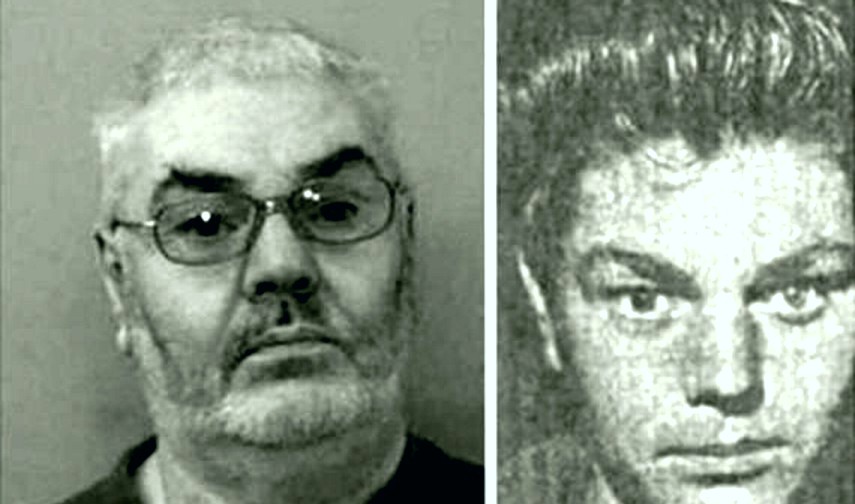
(2) Here are the implications for RS and AK
It puts the 46-day delay (caused by the defenses) in retrieving the bra clasp into perspective.
It’s not the first case of somebody being convicted of murder decades after the crime took place on the strength of DNA evidence. Ronald Castree was convicted of murdering Lesley Molseed 32 years later.
It also highlights the arrogant negligence of the DNA consultants Stefano Conti and Carla Vecchiotti who had refused to carry out ordered test on the knife for flimsy reasons (“the technology is experimental” when it wasn’t) that no US or UK court would have accepted. They had been specifically instructed to do the tests if possible by Judge Hellmann.
At trial in 2009 it was accepted that Amanda Knox’s DNA was found on the handle of the knife sequestered from Sollecito’s kitchen. There still is no argument about that.
And a number of independent forensic experts - Dr. Patrizia Stefanoni, Dr. Renato Biondo, Professor Francesca Torricelli and former Caribinieri General Luciano Garofano - had all confirmed that Meredith’s DNA was found on the blade.
Even Greg Hampikian, a forensic expert who argues Knox is innocent, concedes that Meredith’s DNA was definitely found on the blade.
Stefano Conti and Carla Vecchiotti didn’t know that Dr Stefanoni analysed the traces on the knife a long six days after last handling Meredith’s DNA. Contamination couldn’t possibly have occurred in the laboratory after so long a gap.
At the appeal, Professor Guiseppe Novelli testified that there are a number of laboratories that now have the latest accepted technology to carry out a new test on the remaining DNA on the knife.
The fact that Judge Hellmann denied the prosecution the opportunity to present evidence to the contrary was a violation of the procedure code. Italian law states the following:
If new evidence about a point is admitted, evidence a contrario proposed by the opposing party must always be admitted too.
Dr Giovanni Galati has now argued in his appeal to the Supreme Court that Judge Hellmann should have allowed a new test to be performed because the technology is NOT experimental but cutting edge. Summary here:
The second [point concerns] the decision to not allow a new forensic investigation requested by the prosecution at the end of the ruling discussion. In the appeal to Cassation it is written that the Appeal Court’s rejection reveals “contradictoriness/contrariness and demonstrates manifest illogicality in the grounds for the judgement/reasoning report”.
As remarked at the top, if the entire judgment or the DNA report are not thrown out for illegal scope, Judge Hellman’s refusal to allow the prosecution’s request to allow a new test on the knife will be the main reason why his verdict will be revoked.
Under Italian law RS and AK still stand accused until the Supreme Court signs off. Anyone who is concerned with the truth and justice and what Meredith stood for and the good name of Italy will want to know whether the remaining DNA on the knife is Meredith’s.
If Meredith’s DNA is identified on the knife it should make conviction and extradition a slam dunk..
[Below: ViaDellaPergola’s video first posted 18 months ago and still relevant]
Friday, July 20, 2012
Dissecting The Hellmann Report #1: Highlighting Representative Examples Of Its Many Bizarre Quirks
Posted by Cardiol MD
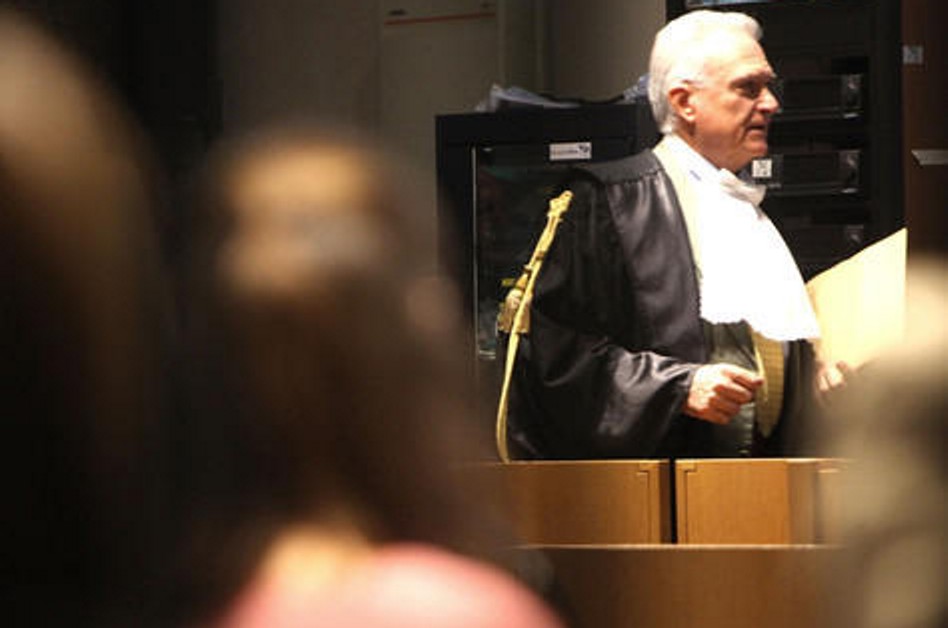
[Above: Judge Hellman. At bottom: Judge Zanetti, who may have written the sentencing report]
Milan and Rome are the main venues for Italy’s important business trials. Those in Perugia are small and relatively obscure.
In contrast Perugia handles very important criminal investigations for the central government when there are conflicts of interest in Rome. So Perugia was handed the very sensitive and politically explosive investigations into Rome politicians siphoning funds from the 2006 winter Olympics construction and the 2010 earthquake damage reconstruction.
This explains why Dr Galati the chief prosecutor for Umbria was transferred from the Supreme Court in January 2011 where he had been a deputy chief prosecutor and why he has a high profile throughout Italy. And why Judge Hellman, a business judge, is almost unknown outside Perugia who at times seems a little cranky with his lot in life. His co-judge Massimo Zanetti, also little known, handles civil trials.
Read in Italian, Dr Galati’s Supreme Court appeal against the Hellman/Zanetti appeal verdict which is some pages longer than the Hellman & Zanetti report, is absolutely scathing. (The team will have the PMF translation ready soon.) Dr Galati seems almost offended to be facing what he seems to see as a childish and legally inferior piece of work.
Dr Galati takes Hellman & Zanetti apart at three levels, as the Perugia media summarised at his press conference five months ago.
First, that the scope is illegally wide for an appeal judgement. Second, that the DNA report by Stefano Conti and Carla Vecchiotti (which concluded with innuendo rather than firm findings) was unnecessary at the appeal level and should never have been commissioned. And third that Hellman & Zanetti are out of order in their subjective interpretations of trial evidence their appeal court mostly didnt look at, and trial witnesses their appeal court never saw.
As a lawyer in the common-law systems of the US and UK I have read plenty of equivalent arguments by judges which logically and legally and objectively almost always hit a very high plane.
On the Hellman & Zanetti report I have to agree with Dr Galati. This seems a dismally inferior piece of work.
To me this document reads like the work-product of a naïve freshman law student in appellate procedure class submitted with no reasoned presentation of facts and evidence as a defendant’s brief, instead of as the official report of a Regional Court Of Assizes Of Appeal submitted in the name of the Italian People with a sober presentation of Facts and Evidence and a reasoned Explanation of Conclusions.
In my view and surely Dr Galati’s it deserves no more than an F.
The Hellman/Zanetti report is emotional and hyperbolic, but it is neither persuasive nor professional. Its faults are so densely packed that any TJMK series fully analyzing them would need more space than posting of the full Hellmann/Zanetti Report.
The calunnia section alone (2,447 words long) to do with Knox’s framing of Lumumba has more than 50 dubious statements. It is also short enough to demonstrate here the weaknesses typical of the whole report, despite this section’s secondary bottom-line significance.
The very first line of this section (beginning on page 21 of the PMF translation) typifies the tone of the whole Report.
The “spontaneous” declarations rendered by Amanda Knox on November 6, and the “¦”¦.
Note Hellmann & Zanetti’s contemptuous use of quotation marks here.
On the same page Hellmann & Zanetti begin a paragraph thus: “According to the hypothesis of the prosecution”¦”, but then don’t go at all to state the real hypothesis of the prosecution.
Instead, Hellmann & Zanetti glide smoothly into preposterous “˜straw-man’ sophistry in which he attributes to the prosecution his own speculative and prejudiced conclusions, instead of the hypothesis the prosecution did submit:
Amanda Knox, at that point exhausted from the long interrogation, and above all demoralized by having learned from the people interrogating her that Raffaele Sollecito had, so to speak, abandoned her to her destiny, denying the alibi [30](Motivazione page number) that he had offered her up to then (having spent the whole night together at Sollecito s house), supposedly resorted to a final defence effort, representing more or less what actually happened in the house at via della Pergola, but substituting Patrick Lumumba for Rudy Guede in the role of protagonist: one black for another, to quote the Prosecutor.
This Court does not share the hypothesis of the prosecution.
Actually this (Hellmann & Zanetti) court misrepresents the hypothesis of the prosecution as argued above.
“...exhausted from the long interrogation, and above all demoralized” These do not need further comment. They are Hellmann & Zanetti’s own biased edits, disguised as prosecutors’ hypotheses.
“...having spent the whole night together at Sollecito’s house…” Here Hellmann & Zanetti seem to blithely assume the truth of Knox’s disputed alibi, but is probably merely repeating what her alibi was not “blithely” assuming it to be the truth. If so he should have used the proper quotation marks.
So do Hellmann & Zanetti sympathise with Knox’s demoralization at the denial of her false alibi? How do they explain the apparent conflict between “˜more or less what actually happened’ and “˜spent the whole night together at Sollecito’s house’? See later.
“”¦representing more or less what actually happened in the house at via della Pergola”¦” Here, Hellmann & Zanetti begrudgingly seem to acknowledge that Knox was present in the house at via della Pergola, but later will disavow any guilt on Knox’s part, except for her calunnia offence.
Continuing on the first page of his report’s calunnia section, Hellmann & Zanetti state:
The obsessive length of the interrogations which took place day and night and were conducted by several people questioning a young and foreign girl, who at that time did not understand or speak the Italian language well at all, ignorant of her own rights and deprived of the advice of a lawyer, to which she would have been entitled since she was”¦”¦
“...obsessive length…” This seems too obviously inappropriate to need further comment. The interrogations themselves were actually quite short.
“...took place day and night… ” This is factual, but hyperbolic; included for both dramatic implication and dramatic inference.
“...young…” Youth is a mitigating factor in Italian law, so Hellmann & Zanetti’s reference to Knox as “˜young’ is not an irrelevancy, but they do allude to the youth of the persons involved over three times more frequently than Judge Massei did.
“...foreign…” This is also relevant because Knox was not fluent in Italian, although an interpreter was provided.
“”¦ignorant of her own rights”¦” This is true in almost all criminal cases, but there are no signs here that Knox’s rights were trampled on.
“”¦deprived of the advice of a lawyer, to which she would have been entitled”¦” She was only a witness at this point so a lawyer was not required under the Italian code.
My understanding is that Knox was in fact informed that she had the right to the advice of a lawyer, was offered such advice, but declined it. So “deprived” again smacks of the Hellmanian or Zanettian hyperbole-for-dramatic-effect.
There are many other dubious statements in Hellman & Zanetti’s calunnia section. Here are a couple of typical ones:
”¦.Amanda Knox, who had no reason at the beginning to be scared, entered into a state of stress and oppression as a consequence of the interrogation and the way it took place.
The dispute, yet to be resolved with a reasoned explanation by the Hellmann & Zanetti Court, was whether Knox and Sollecito were guilty or not guilty.
Here, Hellmann & Zanetti have already assumed Knox’s plea of Not Guilty to have been proven, though they have offered no reasoned explanation for such assumption.
Guilty or Not Guilty, Knox actually did have every reason to be scared, merely because normal Discovery-Procedures can be scary; other members of the group of Discovery witnesses were scared too. (I use “Discovery” in the sense of legal disclosure, including but not restricted-to the discovery-of-Meredith’s-body.)
If Guilty, Knox had additional real reason to be scared.
It is in fact not at all logical to assume that Amanda Knox, if she had actually been an accomplice [concorrente] in the crime, could hope that giving Patrick Lumumba’s name”¦”¦could have somehow benefited her position”¦.
Hellmann & Zanetti’s sophistry consistently requires the reader, elsewhere, to attribute Knox’s inconsistent, and incriminating, often illogical, falsehoods and behaviours, to Knox’s confusion caused by prosecutorial oppression. Some of those falsehoods were used by Knox very obviously in the hope of benefit to Knox.
But now, Hellmann & Zanetti inconsistently require the reader to believe that it is not at all logical to assume that Knox could hope to benefit from one of her falsehoods.
But of course Knox could hope to benefit from one of her falsehoods.
Elsewhere in its Calunnia section (page 22 of the translation) Hellmann & Zanetti had already argued, that
“¦.the fact that the caresses, simple signs of tenderness between two lovers, could have been a way of comforting each other”¦..
Here, Hellmann & Zanetti are deceptively implying that lovers comforting each other, having (only) an innocent construction, excludes the existence of a factor additional to love, namely that of a guilty-pair afraid of exposure as a guilty-pair.
The potentially most incriminating issues in this case are whether Meredith did scream just before she died, and if so when Meredith screamed.
The Amanda Knox and Raffaele Sollecito “innocentisti” members know this, but they avoid focus on it in order to minimize attention to those issues, as crucial as they are.
A key focus-avoidance ploy is to confuse the issue by isolating each element of evidence from every other element and flood discussion of each element with real and imagined reasons-to-doubt the significance of each element.
By doing so, perception of the location of Reasonable Doubt, in the mind of the designated Finder(s)-of-Fact, may be displaced so far away that they conclude that Guilt cannot be reached, and that the Defendant(s) are Not Guilty beyond a doubt that is a Reasonable Doubt.
This defense ploy is being employed more and more in criminal trials, and is much employed in Meredith’s case, or as it has become, Amanda Knox’s case. The Supreme Court of course will totally ignore such legal nonsense.
The first-ever documented references to Meredith screaming just before she died came from the mouth (and hand in the case of her notes) of Amanda Knox herself.
Hellmann & Zanetti do not, at first, seem to doubt that a scream was heard by witness Capezzali that night.
However, they introduce the issue of scream under the Heading Time of death, which they characterize as “extremely weak for its ambiguity, since it cannot even be placed with certainty”, as if lack of “certainty” is way-below reasonable doubt (as in “required to reach a guilty-verdict beyond-a-reasonable-doubt”), obfuscatingly merging them into each other.
Hellmann & Zanetti then cast doubt on whether any witness(es) heard any-scream-at-all that particular night and/or time, because he supposed (innocent) screams were to be heard there on many nights and at many times.
Hellmann & Zanetti stated that their Court had “no real reason to doubt” that a scream occurred at night in the general vicinity of Meredith’s house NOR to suspect that witnesses who testified that they had heard a scream had not heard a scream.
What Hellmann & Zanetti claim that they do doubt is that the scream witnesses testified to having heard occurred at a sufficiently specified definite time, or that the scream they said they heard had actually occurred on the night of Nov. 1-2, 2007, and that even if such a scream did occur it is not “certain” that the scream was Meredith’s scream.
Hellmann & Zanetti’s use of “certain” reveals a biased perspective. It is as if “not certain” is now Hellmann & Zanetti’s equivalent to “not beyond a reasonable doubt.
A well-known saying goes “If it looks like a duck, walks like a duck, and quacks like a duck ““ it’s a duck.”
Applying the evidentiary-item-isolation-ploy to that saying, multiple doubts are introduced as to each item, with the intended result of promoting enough doubt to exclude it, too often successfully.
This could be called the Ugly Duckling Effect, after H.C. Andersen’s Fairy Story ““ here Hellmann & Zanetti seem to want us to conclude that Amanda Knox is a swan, and is not really an ugly duckling.
[Below: Judge Zanetti at left probably wrote the report that Judge Hellman may not have liked]
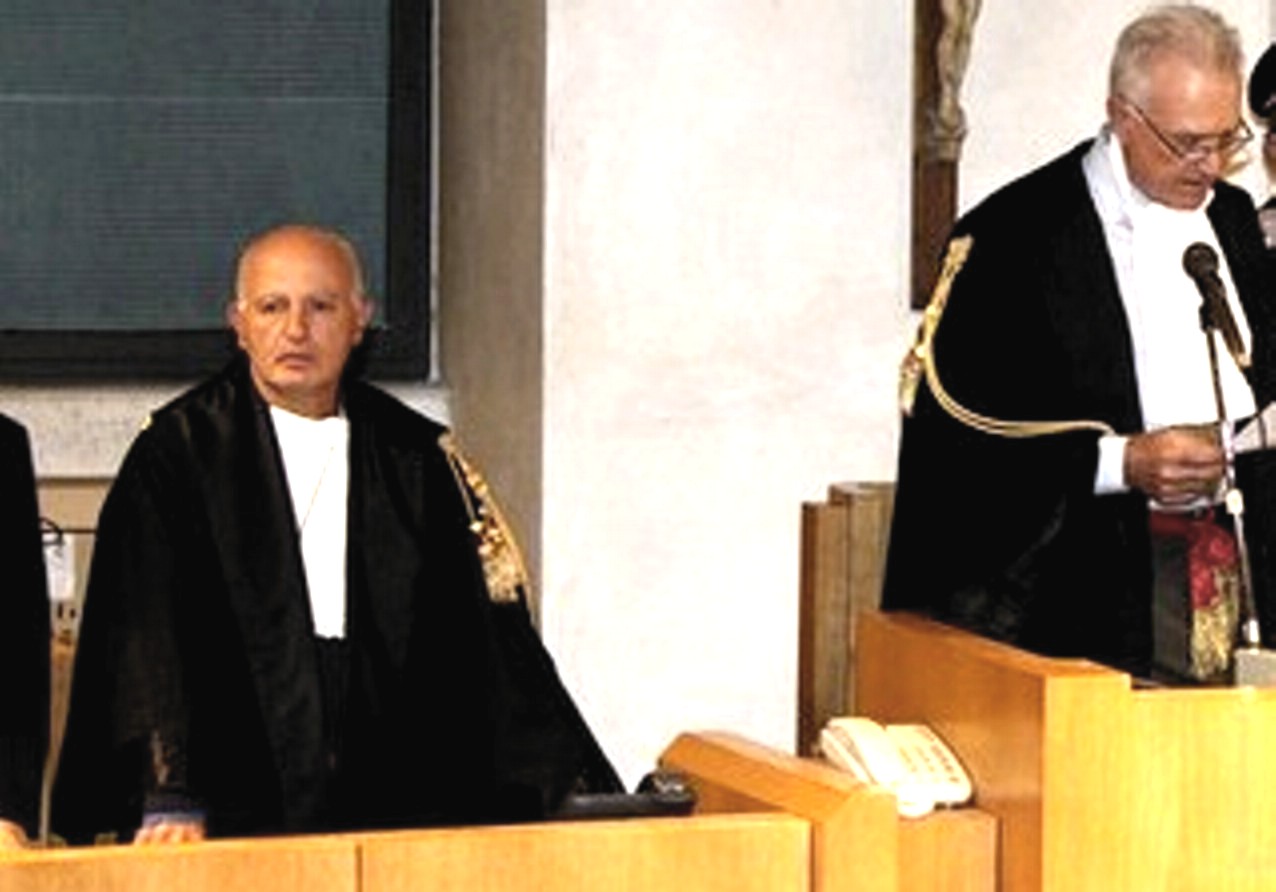
Thursday, July 19, 2012
This Formidable Prosecution Appeal To The Supreme Court Is Placed On The Agenda Next March
Posted by Peter Quennell

The Associated Press once again reveals its strong systematic anti-Italy bias in reporting the scheduling of the appeal.
Its headline on the report it sent out to thousands of its owners the media outlets reads “Amanda Knox Case: Acquittal Appeal Set For March By Italy”
Huh? That is the guts of the thing?
Well, hardly.
First, defense chances are slim, as there is no question that Knox did point falsely to Lumumba. On tape she even admitted that to her own mother, and her various explanations on the stand at trial simply dropped her in it some more.
That defense appeal could be dismissed in a sentence or two. It is simply grandstanding.
And second, vastly more importantly because this could lead to a complete retrial back in Perugia the AP headline and story should have fully explained the real 80,000 pound gorilla in the room.
This is the appeal that the Chief Prosecutor for Umbria Dr Galati has filed. The Associated Press has never told the global audience either what is in the prosecution appeal or precisely who Dr Galati is. Not even a hint.
Dr Galati was a Deputy Chief Prosecutor at the Supreme Court and is one of the most powerful and experienced in Italy. Why was he not quoted in the AP’s story?
Here is the real story of his appeal that the Associated Press doesn’t seem to want the global audience to know. First posted here back on 14 February when Dr Galati called his press conference on the appeal.
Italian lawyers are already remarking that Dr Galati’s appeal as summarised below is as tough as they ever get.
In their view the Hellman report reads more like a defense brief than a balanced appeal-court outcome in a murder trial. Both judges were put on the case on mysterious instructions from Rome, suggesting that the minister of justice had perhaps been leaned on - the judge pushed aside was extremely annoyed.
Both Judge Hellmann and Judge Zanetti, while undeniably good judges in their own fields (business and civil), are vastly less experienced at criminal trials than either Judge Micheli or Judge Massei. The entry in the Italian Wikipedia describes them thus.
Although the Assize Court of Appeal was to be chaired by Dr. Sergio Matteini Chiari, Chairman of the Criminal Division of the Court of Appeal in Perugia, in circumstances not well understood Dr. Claudio Pratillo Hellmann, who chairs the Labor Chamber of the Court, has been called on to preside over the appeal court,
The judge to the side of the main judge, Dr. Massimo Zanetti, came from the Civil Section, and both had had limited experience with criminal trials both rather remote in time (only the cases of Spoleto and Orvieto).
Judge Hellmann’s announcement of the verdict on the night was very odd, suggesting he had been outnumbered and was embarrassed. Remarks he made the next day seemed to confirm that. The weak sentencing report is said to be not his work, and was written by Judge Zanetti.
The Supreme Court of Cassation could insist on a complete new appeal trial or a partial new trial in Perugia if it accepts any of Dr Galati’s arguments at all. His appeal statement appeal is in three tiers, and a reversal could be ordered at any tier..
1. The Hellmann Court’s wide scope was illegally far too wide
Italian judicial code is very clear on this. They MUST stick to just the appealed items and not wander all over the map. Judge Zanetti was quite wrong at the start to declare that everything was open except the fact that Meredith had been murdered.
2. The DNA consultancy by Stefano Conti and Carla Vecchiotti was illegal
Defenses had every chance to attend the Scientific Police testing the first time around. It was a slippery dodge to skip those tests and then slime them. They had every opportunity at trial to throw aspersions. They are not meant to shop around.
3. There are many problems of wrong logic, evidence, and witnesses
The Massei trial sat through weeks and weeks of skilled prosecution presentations of the evidence including the forensic evidence and the many witnesses. The Hellman court got to see almost none of this and heard mostly from the defense.
This translation is from Umbria24 by our main poster ZiaK.
Meredith case: the prosecution appeals to Cassation: the acquittal verdict should be “nullified”.
For the Chief Magistrates of the [Umbria] Prosecution, “it was almost exclusively the defence arguments which were taken heed of”
By Francesca Marruco
The first-level conviction verdict was “complete and thorough” while the verdict of the second-level is “contradictory and illogical”. For this reason, the General Prosecution of Perugia asks the Cassation to revoke or invalidate it.
“We are still extremely convinced that Amanda and Raffaele are co-perpetrators of the murder of Meredith Kercher” said the Chief Prosecutor of Perugia, Giovanni Galati and the Deputy Chief Prosecutor, Giancarlo Costagliola.
Verdict that should be revoked
“The second-level verdict should be annulled/revoked…. There are precise reasons for revoking it”, Mr Galati went on to say. In the Hellman reasoning report on the verdict with which the second-level judges acquitted the ex-boyfriend and girlfriend “there are so many errors, and many omissions. There is inconsistency in the grounds for judgement, which brings us to nothing.”
“It is as if they had ruled ex novo [anew] on Meredith’s murder” added the Deputy Prosecutor, Giancarlo Costagliola, “basing their decision solely on the arguments of the defence.”
“Normally the appeal judge evaluates the reasoning procedure of the first-instance judge and compares it to new elements. But this one missed that out altogether: there is no comparison between the checks carried out in the first and second instances. Only what was carried out during the appeal was evaluated.”
Only defence arguments were taken heed of
For the magistrates, in fact, the second-level judges “took heed, almost exclusively, of the arguments of the defence consultants or the reconstruction hypotheses that were largely to the benefit of the defense theses”.
The prosecutors who authored the appeal [to Cassation] also criticized the “method used”. “The first-instance verdict”, they wrote, “was summarized in just a few lines”,
“The verdict [which we] challenge completely ignored all the other aspects which corresponded with the accusation’s hypothesis, all the aspects which, on the contrary - as was seen in the reasoning report of the first-instance verdict - had been rigorously pointed out and considered by the Assizes Court [trial court] in its decision.”
“In examining the individual [items of] evidence, the challenged sentence has fallen into consistent procedural error in the weaknesses and evident illogicality of the grounds for its decision.”
Prejudice by the two appeal judges
For the General Prosecution magistrates, the second-level [first appeal] judges appear to have shown “a sort of prejudice” with the “infelicitous preamble of the judge [the author], who is supposed to be impartial”, when he declared that “nothing is certain except the death of Meredith Kercher”, which to the others [Mr Galati and Mr Costagliola] is nothing more than “a resounding preview/forecast of the judgement” and a “disconcerting” affirmation.
The ten points of the appealThe reasons for the appeal to Cassation which Perugia’s General Prosecution presented today against the acquittal verdict of Amanda and Raffaele are based on ten points of the second-level verdict.
The first is the lack of grounds for the decision, in the decree of 18 December 2010, to allow the forensic testimony/expert witness in the appeal judgement.
The second, in contrast, concerns a contrary decision: the decision to not allow a new forensic investigation requested by the prosecution at the end of the ruling discussion. In the appeal to Cassation it is written that the Appeal Court’s rejection reveals “contradictoriness/contrariness and demonstrates manifest illogicality in the grounds for the judgement/reasoning report”.
The other points deal with the decision by the Appeal court of Assizes of Perugia to not hear the witness Aviello, also the definition of “unreliable” [in the Hellman Report] with reference to the witnesses Roberto Quintavalle and and Antonio Curatolo, also the time of death of Meredith Kercher, also on the genetic investigations.
As well as the analyses of the prints and other traces, also the presence of Amanda and Sollecito in via della Pergola, also the simulation of a crime [the staged break-in], and also the exclusion of the aggravating circumstance of the crime of “calumny”.
Missing assumption/acceptance of decisive evidence
In the appeal to Cassation there is also mention of the “missing assumption/acceptance of a decisive proof”
In other words, of that proof [presented at trial court] which consisted of “the carrying out of the genetic analysis on the sample taken from the knife by the experts appointed by the Court during the appeal judgement, who did not carry out the analyses of that sample, thus violating a specific request contained in the [orders given to them] when they were assigned to the expert-witness post”
“In the second-level [Hellman] verdict”, the magistrates said, “the judges sought to refer to this in their own way, by speaking of an “experimental method” by which these tests/checks could be carried out.
But this is not the case”, said Deputy Chief Prosecutor Giancarlo Costagliola: “Dr Novelli [the prosecution’s DNA consultant at appeal] spoke of cutting-edge technology, not of experimental methods”.
Friday, July 13, 2012
Rebutting Saul Kassin’s Substantive Claim Of Forced Confession
Posted by Fuji
This was first posted on 12 January 2011 (see 30+ comments under that post). It shows in effect that EVEN IF the timeline on the night of Knox’s “confession” in which she actually blamed Patrick Lumumba resembled Saul Kassin’s fantasy timeline there is no sign that Amanda Knox is one of the very few with the “right” psycho-sociology to cave quickly under police interrogations.
My original post pre-dates by some month Dr Kassin’s erroneous, self-serving claims to Seattle radio and CBS 48 Hours, and by over a year his misleading KEYNOTE address (scroll down) to the John Jay College global conference last month (see page 31 of the program).
We don’t know yet when Saul Kassin’s submission to the Hellman court via Amanda Knox’s lawyers was made, or the nature of its impact on judges and jury, if any. Dr Kassin is welcome to try to explain all of Amanda Knox’s other “confessions” as described here. Also to try to explain all of Sollecito’s “confessions” as described here.
Meredith’s case is absolutely riddled with fabricated false myths.
They are now found by the hundreds on some misleading websites, and they simply make experienced law enforcement and criminal lawyers laugh.
For example “Police had no good reason to be immediately suspicious of Knox simply because the murder occurred at her residence”. And “The double-DNA knife is a priori to be disregarded as evidence, because no murderer would retain possession of such a murder weapon.”
One of the most strident and widespread myths is that Amanda Knox’s statements to the Perugian investigators on 5 and 6 November 2007, placing her at the scene of Meredith’s murder, are to be viewed as the products of a genuinely confused mind imbued with a naïve trust of authority figures.
The apparent certainty with which many of Amanda Knox’s most vocal supporters proclaim that Knox’s statements are actual “false confessions” as opposed to deliberate lies is not supported by even a cursory reading of the pertinent academic literature regarding false confessions.
What actually are “false confessions”?
Richard N. Kocsis in his book “Applied Criminal Psychology: A Guide to Forensic Behavioral Sciences” (2009), on pages 193-4 delineates three different kinds of false confessions:
First, a voluntary false confession is one in which a person falsely confesses to a crime absent any pressure or coercion from police investigators….
Coerced-compliant false confessions occur when a person falsely confesses to a crime for some immediate gain and in spite of the conscious knowledge that he or she is actually innocent of the crime….
The final type, identified by Kassin and Wrightsman (1985), is referred to as a coerced-internalized false confession. This occurs when a person falsely confesses to a crime and truly begins to believe that he or she is responsible for the criminal act.
The first problem facing Knox supporters wishing to pursue the false confession angle as a point speaking to her purported innocence is epistemological.
Although much research has been done on this phenomenon in recent years, academics are still struggling to come to terms with a methodology to determine their incidence rate.
The current state of knowledge does not support those making sweeping claims about the likelihood of Knox’s statements being representative of a genuine internalized false confession.
As noted by Richard A. Leo in “False Confessions: Causes, Consequences, and Implications” (Journal of the American Academy of Psychiatry and the Law, 2009):
Although other researchers have also documented and analyzed numerous false confessions in recent years, we do not know how frequently they occur. A scientifically meaningful incidence rate cannot be determined for several reasons.
First, researchers cannot identify (and thus cannot randomly sample) the universe of false confessions, because no governmental or private organization keeps track of this information.
Second, even if one could identify a set of possibly false confessions, it is not usually possible as a practical matter to obtain the primary case materials (e.g., police reports, pretrial and trial transcripts, and electronic recordings of the interrogations) necessary to evaluate the unreliability of these confessions.
Finally, even in disputed confession cases in which researchers are able to obtain primary case materials, it may still be difficult to determine unequivocally the ground truth (i.e., what really happened) with sufficient certainty to prove the confession false.
In most alleged false-confession cases, it is therefore impossible to remove completely any possible doubts about the confessor’s innocence.
The next problem Knox supporters face is that, even allowing for an inability to establish a priori any likelihood of a given statement being a false confession, the kind of false confession which is usually attributed to Knox is in fact one of the LEAST likely of the three types (Voluntary, Compliant, and Persuaded, as Leo terms the three different categories) to be observed:
Persuaded false confessions appear to occur far less often than compliant false confessions.
Moreover, despite assertions to the contrary, Knox and her statements do not in fact satisfy many of the criteria researchers tend to observe in false confessions, particularly of the Persuaded variety:
“All other things being equal, those who are highly suggestible or compliant are more likely to confess falsely. Individuals who are highly suggestible tend to have poor memories, high levels of anxiety, low self-esteem, and low assertiveness, personality factors that also make them more vulnerable to the pressures of interrogation and thus more likely to confess falsely…
Highly suggestible or compliant individuals are not the only ones who are unusually vulnerable to the pressures of police interrogation. So are the developmentally disabled or cognitively impaired, juveniles, and the mentally ill….
They also tend to occur primarily in high-profile murder cases and to be the product of unusually lengthy and psychologically intense interrogations… ordinary police interrogation is not strong enough to produce a permanent change in the suspect’s beliefs.
Most significantly, there is one essential element of a true Persuaded False Confession which in Knox’s case is highly distinctive:
To convince the suspect that it is plausible, and likely, that he committed the crime, the interrogators must supply him with a reason that satisfactorily explains how he could have done it without remembering it.
This is the second step in the psychological process that leads to a persuaded false confession.
Typically, the interrogator suggests one version or another of a “repressed” memory theory.
He or she may suggest, for example, that the suspect experienced an alcohol- or drug-induced blackout, a “dry” blackout, a multiple personality disorder, a momentary lapse in consciousness, or posttraumatic stress disorder, or, perhaps most commonly, that the suspect simply repressed his memory of committing the crime because it was a traumatic experience for him.
The suspect can only be persuaded to accept responsibility for the crime if he regards one of the interrogators’ explanations for his alleged amnesia as plausible.
Knox did not in fact claim drug or alcohol use as the source of her amnesia - rather, she claimed to have accepted the interrogators’ attribution that this was due to being traumatized by the crime itself, and she offers no other explanation for her selective amnesia:
This is from Knox’s statement to the court in pretrial on 18 October 2008 with Judge Micheli presiding.
Then they started pushing on me the idea that I must have seen something, and forgotten about it. They said that I was traumatized.
Of course, Knox’s initial statement went far beyond being that of being merely a witness to some aspect of Ms. Kercher’s murder, as the interrogators at first seemed to believe was the case.
Rather, her statement placed her at scene of the murder during its actual commission while she did nothing to avert it, which naturally made her a suspect.
In other words, in the absence of any of her other testimony which indicated that she was only a witness to the murder, her own self-admitted rationale for providing a false confession was that she was traumatized by the commission of the murder itself.
Perugia judges will be familiar with all of the above and we can be sure that they brief the lay judges on the remote circumstances and incidences of false confessions.
If I were a Knox defense attorney, I would find it to be a far more fruitful line of argumentation to argue that she was simply lying, rather than claiming the supremely unlikely provision of an actual internalized false confession.
**********
First posted by Fuji on 12 January 2011. Everything in this post applies equally to the ludicrously inaccurate claims of ex FBI “mindhunter” John Douglas in his books and lobbying at the State Department.
Tuesday, July 10, 2012
Saul Kassin: An Example Of How The Knox Campaign Is Misleading American Experts And Audiences
Posted by The Machine
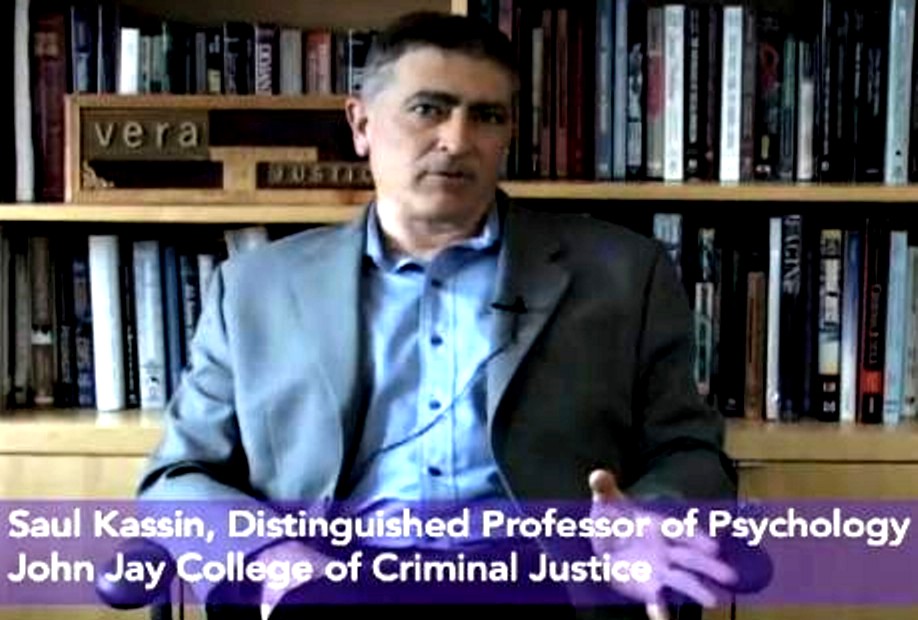
It has happened again and again.
Seemingly good, well-qualified lawyers and experts in police science have repeatedly been made to surface to spout inanities and wrong “facts” put out courtesy of Curt Knox’s “public relations” campaign.
It seems that Dr Saul Kassin is yet another of these naive dupes.
Who is Dr Saul Kassin?
The Social Psychology Network website states that he is a Distinguished Professor of Psychology at the John Jay Criminal Justice College in New York City. The website outlines his impressive academic credentials which include a Ph.D. from the University of Connecticut.
Curt Knox’s chief hatchet man Bruce Fischer, himself notoriously unqualified in every field relevant to the case who for a long time masqueraded pompously under a false name, claimed on his website that Saul Kassin gave help to Amanda Knox’s lawyers in Perugia.
Also that his work was presented to the court during the 2011 Hellman appeal.
Many may not know this but Sarah was instrumental in bringing Kassin in to analyze Amanda’s interrogation. His work was presented during the appeal..
The family had asked that we not release Kassin’s work to the public until they received clearance from the attorneys. I know I often state that this case is over but the attorneys rightfully want to keep everything professional until the Italian Supreme Court confirms Hellmann.
Last October, Saul Kassin did speak at length about Amanda Knox’s interrogation in an interview with John Curley on Radio Kiro FM.
In this post we’ll examine ten of the false claims which have long been circulated by Curt Knox’s campaign, with Bruce Fischer’s site as the central clearing house, and which were regurgitated by Saul Kassin in that interview.
False Claim 1: They brought her in for that final interrogation late at night.
No they didn’t.
Neither the police nor the prosecutors brought Amanda in for questioning on 5 November 2007. Amanda Knox herself testified in court that she wasn’t called to come to the police station on 5 November 2007.
Carlo Pacelli: “For what reason did you go to the Questura on November 5? Were you called?”
Amanda Knox: “No, I wasn’t called. I went with Raffaele because I didn’t want to be alone.”
Amanda Knox went with Raffaele Sollecito because she didn’t want to be alone. Kassin’s false claim is the first red flag that Saul Kassin is very confused or has been seriously misled when it comes to this well-documented and well-handled case.
False Claim 2: The so-called confession wasn’t until 6:00am.
No it wasn’t.
If Saul Kassin had actually read Amanda Knox’s first witness statement, he would have known that it was made at 1:45am. Knox had admitted that she was at the cottage when Meredith was killed some time before this.
False Claim 3: She was interrogated from 10:00pm to 6.00am.
No she wasn’t.
According to the Daily Beast Amanda Knox’s questioning began at about 11:00pm.
Since Knox was already at the police station [in the company of Raffaele Sollecito] the head of the murder squad decided to ask her a few questions. Her interrogation started at about 11 p.m.
After Amanda Knox had made her witness statement at 1:45am, she wasn’t questioned again that evening. That was it.
However, Amanda Knox herself then wanted to make further declarations and Mr Mignini who was on duty on the night sat and watched while Knox wrote out her declarations.
Mr Mignini explained what happened in his email letter to Linda Byron, another who was factually challenged.
All I did was to apply the Italian law to the proceedings. I really cannot understand any problem.
In the usual way, Knox was first heard by the police as a witness, but when some essential elements of her involvement with the murder surfaced, the police suspended the interview, according to Article 63 of the penal proceedings code.
But Knox then decided to render spontaneous declarations, that I took up without any further questioning, which is entirely lawful.
According to Article 374 of the penal proceedings code, suspects must be assisted by a lawyer only during a formal interrogation, and when being notified of alleged crimes and questioned by a prosecutor or judge, not when they intend to render unsolicited declarations.
Since I didn’t do anything other than to apply the Italian law applicable to both matters, I am unable to understand the objections and reservations which you are talking about.
In Amanda Knox’s written witness statement, she explicitly states that she’s making a spontaneous declaration:
Amanda Knox: “I wish to relate spontaneously what happened because these events have deeply bothered me and I am really afraid of Patrick, the African boy who owns the pub called “Le Chic” located in Via Alessi where I work periodically.
False Claim 4: They banged her on the back of the head.
No they didn’t.
All the numerous witnesses who were actually present when Amanda Knox was questioned, including her interpreter, testified under oath at trial in 2009 that she wasn’t hit. She has never identified anyone who hit her and on several occasions confirmed that she was treated well.
Even one of Amanda Knox’s lawyers, Luciano Ghirga, confirmed that Amanda Knox had not been hit: “There were pressures from the police but we never said she was hit.” He never ever lodged a complaint.
False Claim 5: All the other British roommates left town.
No they didn’t.
The police also told Sophie Purton that they needed her to stay on in Perugia on precisely the same basis as Amanda Knox. In chapter 19 of Death in Perugia, John Follain states that Sophie Purton was questioned by Mignini and Napoleoni in the prosecutor’s office on 5 November 2007.
Sophie had been counting on leaving Perugia to fly back home as soon as her parents arrived, but the police called to tell her they needed her to stay on; they would let her know when she could leave.
False Claim 6 : Amanda Knox stayed back to help the police.
No she didn’t.
This claim is flatly contradicted by Amanda Knox herself. In the e-mail she wrote to her friends in Seattle on 4 November 2007 she categorically stated she was not allowed to leave Italy.
i then bought some underwear because as it turns out i wont be able to leave italy for a while as well as enter my house
Knox actually knew on 2 November 2007 that she couldn’t leave Italy. Amy Frost reported the following conversation (The Massei report, page 37),
I remember having heard Amanda speaking on the phone, I think that she was talking to a member of her family, and I heard her say, No, they won’t let me go home, I can’t catch that flight.
It’s not the first time that the myth that Knox chose to stay behind rather than leave Italy has been claimed in the media. And incidentally, lying repeatedly to the police isn’t normally considered to be helping them.
False Claim 7: Amanda Knox had gone 8 hours without any food or drink.
No she hadn’t.
Reported by Richard Owen in The Times, 1 March 2009
Ms Napoleoni told the court that while she was at the police station Ms Knox had been ‘treated very well. She was given water, camomile tea and breakfast. She was given cakes from a vending machine and then taken to the canteen at the police station for something to eat.’
Reported by Richard Owen in The Times, 15 March 2009.
Ms Donnino said that Ms Knox had been “comforted” by police, given food and drink, and had at no stage been hit or threatened.
John Follain in his meticulous book Death in Perugia, page 134, also reports that Knox was given food and drink during her questioning:
During the questioning, detectives repeatedly went to fetch her a snack, water, and hot drinks including camomile tea.
False Claim 8: The translator was hostile towards Amanda Knox.
No she wasn’t.
Saul Kassin offers no evidence that the translator was hostile towards Amanda Knox and there is no evidence that this was the case. Nobody at the questura has claimed this. Amanda Knox’s own lawyers have not claimed this.
Even Amanda Knox herself has never ever claimed that Anna Donnino was hostile towards her although she had every opportunity to do so when being questioned on the stand.
False Claim 9: The translator was acting as an agent for the police.
No she wasn’t.
Saul Kassin offers no evidence to support this claim, which by the way in Italy is the kind of unprofessional charge that incurs calunnia suits. Do ask Curt Knox.
False Claim 10: The police lied to Amanda Knox.
No they didn’t.
The police didn’t mislead Amanda Knox. They told her quite truthfully that Sollecito was no longer providing her with an alibi, and that he had just claimed in the next interrogation room that that she wasn’t at his apartment from around 9:00pm to about 1:00am.
This also is the kind of unprofessional charge that incurs calunnia suits
Some Conclusions
Saul Kassin clearly hasn’t been directed to any of the official court documents like the Massei report, available in accurate English on PMF and TJMK, or the relevant transcripts of the court testimony.
Worse, he clearly hasn’t even studied Amanda Knox’s own witness statements before claiming to the media that they were coerced.
What he seems to have done is to fall hook line and sinker for the fantasy version of Amanda Knox’s interrogation which has been propagated in the media by Amanda Knox’s family.
He has then mindlessly regurgitated this false information in this interview. For somebody with Saul Kassin’s academic qualifications and educational background, it’s inexcusable that he gets so many facts wrong.
He needs to use much more reputable sources or, as so many other dupes before him have done, simply shut up. Of course, it would be professional for him to admit his mistakes.
He is welcome to do that right here.
[Everything in this post applies equally to the ludicrously inaccurate claims of ex FBI “mindhunter” John Douglas in his books and lobbying at the State Department.]
[Below: Dr Jeremy Travis the president of John Jay College of Criminal Justice in NYC]
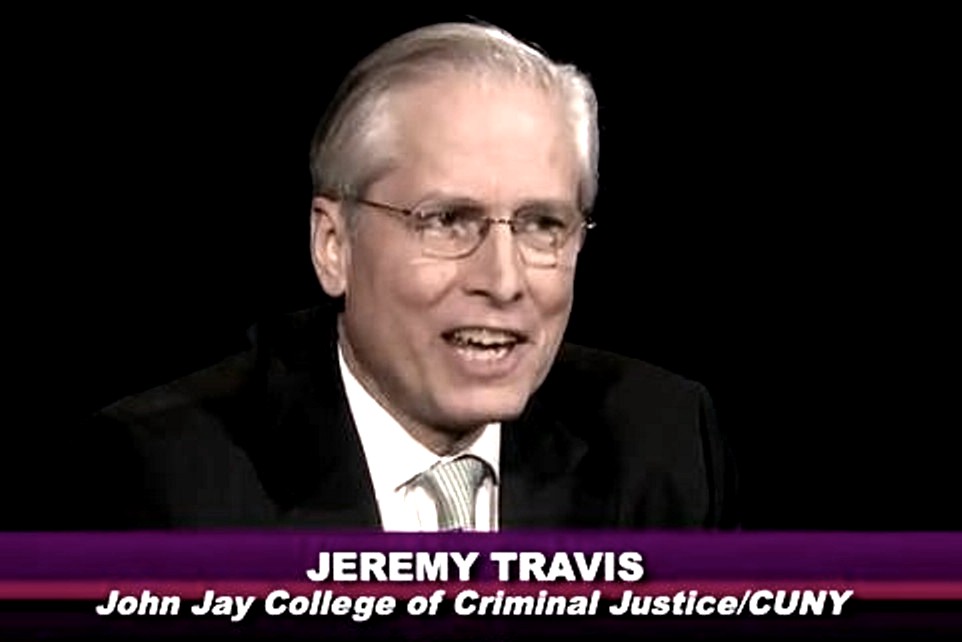
Wednesday, July 04, 2012
The Hands Of Time Video With Screenplay By Amanda Knox - A Confessional Obsession?
Posted by Fly By Night & Thundering
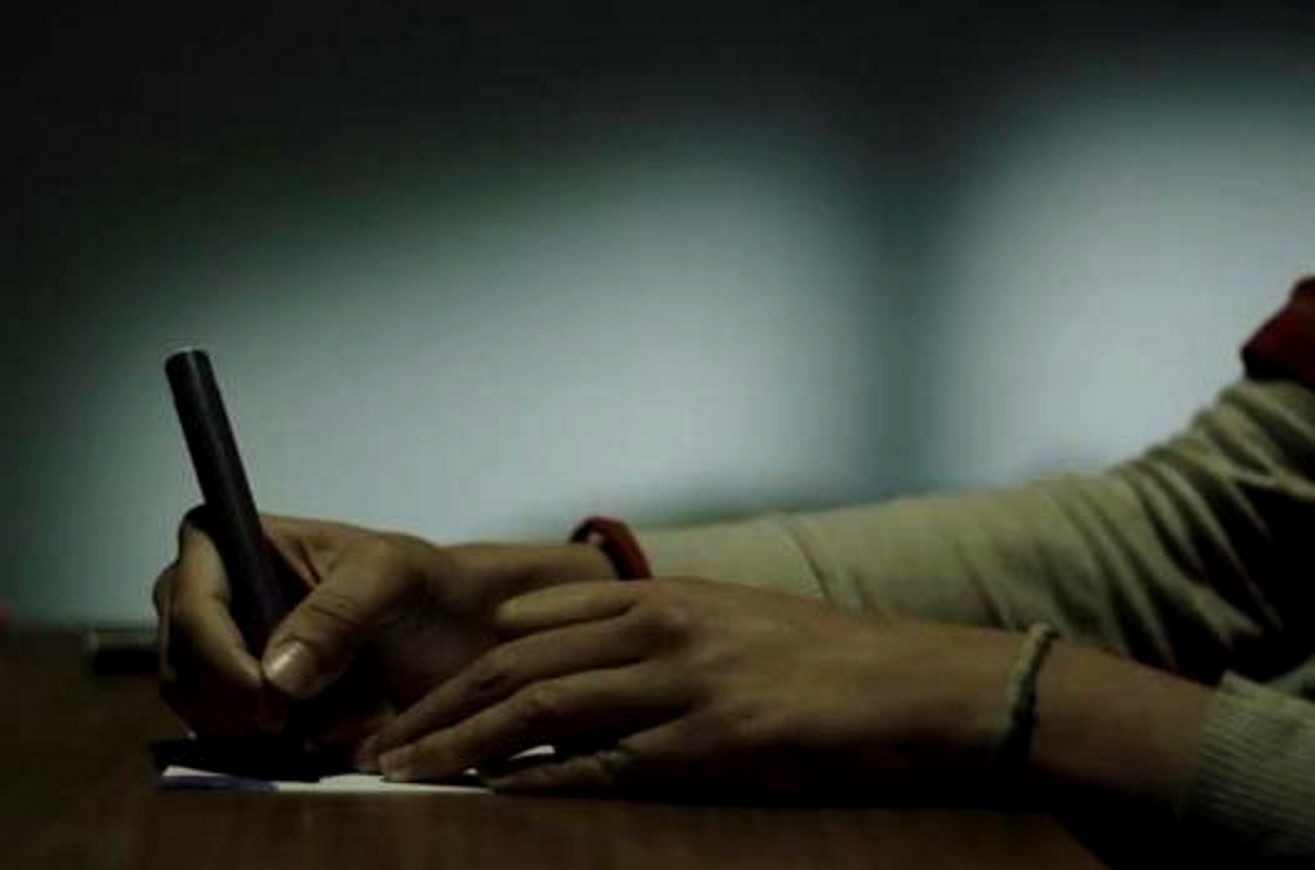
Amanda Knox rarely, if ever, mentions her “˜close friend’, murder victim Meredith Kercher. Perhaps out of her self-proclaimed desire to “˜move on with her life’.
So the recent Hands of Time (H.O.T.) music video The Mistral Blows which was posted on YouTube with a screenplay attributed to the Seattle native is nothing if not astonishing.
Whilst there is some discussion as to whether Amanda Knox wrote the entire screenplay, or a section of it, or whether the screenplay was created through a merging of several versions, the screenplay is clearly attributed to her in the credits that appear on the video.
Crediting Amanda Knox with the screenplay is repeatedly emphasized by H.O.T. themselves who posted multiple Twitter entries:
And this screenplay does Amanda Knox and her claims of innocence in the brutal murder of Meredith Kercher no favours at all.
Although provisionally “˜acquitted’ at the trial of second instance, Amanda Knox still stands accused of a capital crime, aspects of which she seems compelled to continue to portray in her various writings.
The hapless band H.O.T. might be well-advised to disassociate themselves from this endeavour and drop the video like a hot potato. The more-so as they have already burnt their fingers, tampering with the so-far elusive Brand Knox, finding themselves “˜forced to remove [clips of Knox dancing in Capanne] from the file, after a sudden, unexpected and “very strange” last-minute opposition from Amanda’s entourage.’
They state with a hint of bitterness:
The result? A compromise. The image of Knox dancing with carefree abandon in Capanne Prison (easily retrieved from other internet sites) remains, but is obliterated by a large “˜censored’ notice.
The reasons to attempt to disappear this video or, at the very least, any identifiable links with Knox, are abundantly clear to anyone having followed this dreadful case over the last four and a half years.
1) The video is riddled with allusions to the crime itself and features an easily-identifiable Amanda Knox as “˜heroine’ or “˜victim’ as she may now prefer to be seen and depending on how you look at it.
2) Any pre-book-release publicity will potentially devalue the carefully branded and preserved Amanda Knox product.
A cursory look at the video demonstrates the depraved audacity of the writer, a person who simultaneously insists she was found innocent of the crime of murder and of which she still stands accused.
The video features a Knox look-alike ““ recognizable by her clothing - in a prison-cum-house of horrors.
It opens with the heroine sitting down, colouring pictures in a prison cell. Amanda Knox was reported to spend time colouring pictures of her hands whilst in prison.
From there she leaves the cell and embarks on a journey through a range of horrifying experiences, until she finally flees the house but not the prison to which she is eternally condemned.
As she runs through the house of horrors she encounters:
1) Ghost-like figures lurching out at her hinting at the night of Halloween before the murder and the ghouls and demons of the house of horrors both in which the crime took place and in which she is forever imprisoned.
2) A tall, faceless black-haired figure dressed in black carrying an umbrella resembling Meredith Kercher dressed as a vampire on her last night alive, the red belt reminiscent of the fake costume blood and the actual blood spilled the night of the murder.
3) A faceless butcher figure dressed in a blood-stained apron holding a knife, who hands her a maggot-infested apple, reminiscent of the photograph of co-accused Raffaele Sollecito as posted on his Facebook page. The apple is suggestive of the poisoned apple offered by the witch to the innocent Snow White ““
4) Or a subliminal suggestion of Raffaele’s guilt in handing her the infested and poisonous apple “¦.. Remember: she claimed Raffaele may have pressed the murder knife with Meredith’s DNA into her hand whilst she was sleeping.
5) A figure tied to a chair covered in a red cloth hinting of the pools of blood and of Meredith unable to move to defend herself. As she reaches out to lift the red cloth the bound figure screams, sending her running out down staircases and steps and out of the house.
In the same way, witness Nora Cappezzali heard Meredith’s desperate, blood-curdling scream, followed shortly afterwards by running footsteps out of the house of horrors and onto the steel staircase near her home.
The video ends with the Knox look-alike remaining in prison. Both real and imagined.
H.O.T. suggest that the video and screenplay are a means of documenting the tale of the events in Perugia and, of course, Amanda Knox hopes to chronicle the nightmare in which she “˜innocently’ found herself. In so doing, she inadvertently describes the crime and the images, sounds and memories that will seemingly not leave her alone.
Not only are there many references to the crime, but there seems as well a clear jealous obsession with Meredith, given the numerous references and comparisons to Kristian Leontiou’s video Some Say in which Meredith hauntingly starred.
The Knox look-alike emulates Meredith from the Some Say video both in her dress and appearance as well as in her actions. She descends an old staircase, appears in doorways and through arches reminding us of the shots of Meredith and the church of the “˜Some Say’ video.
Emulation is a form of envy. Guilty or innocent, it seems Knox cannot exorcise her memories of the crime, and remains compelled to depict it in screenplays and short stories. Knox is seemingly still jealous of Meredith which had proved her original undoing. Here, in a bizarre reversal of reality, Meredith becomes the foreboding, frightening presence, whereas Knox is the shocked and terrified victim.
At a time when a tough Galati appeal to the Supreme Court and a $4 million book deal are on the table, the memory of Meredith and the crime seem to haunt and obsess Amanda Knox who may reveal a deep-seated need to confess. But while still accused, Amanda Knox cannot afford to engage in such obsessive, confessional activity.
Could this prove to be her final undoing?
Tuesday, June 26, 2012
Italian Police Long Known As Among Europe’s Coolest, Now Also Being Remarked Upon As…
Posted by Peter Quennell
It’s tough right now for Italian cops, going up against the rioting crowds and the illegal immigrants and the three mafias. But with their sustained pressure the mafias are fading, and the riots and immigrants may dwindle soon if and when light appears at the end of the economic tunnel.
And those images are not what Italian police are best known for.
Above all else, they are cool. They officially work hard at being cool and high-profile and rather colorful, which is perhaps one reason why the Italian prison population is so very low. Their regular uniforms and their ceremonial uniforms tend to be eye-catching, and sometimes resplendent, and unless you’re Mr Berlusconi, their manner tends toward firm but agreeable, and sometimes quite funny. .
One can be doing 100 mph on an autostrada and a car will come by at 140 mph, with a police car on its tail which can exceed 200 mph. The second to last image below (above the… enough said) is of a Bugatti Veyron, which even in standard mode is powered by an engine of 1000 horsepower and has been clocked at close to 250 mph. (It also costs close to $2 million to private buyers.)
Now here is a report by John Hopper in the UK Guardian on the Italian police’s frequent warm side, and there are similar tales about the polizei on quite a few English-language and Italian blogs.
The financial crisis in Europe may have brought out the worst in certain bankers, but it seems to be bringing out the best in Italy’s police.
On Tuesday, and for the second time in less than a month, officers called to deal with a shoplifter were reported to have taken pity on the alleged thief and paid for the goods out of their own pockets.
The latest case arose when staff at a supermarket on the outskirts of Siena, in Tuscany, alerted police to a suspected robbery. The officers found a 27-year-old Egyptian and his 19-year-old brother who had apparently failed to pay for goods they had removed from the shop.
The police established that the older of the two was unemployed and had a wife and two children. Along with some pasta, he and his brother were found to have taken only milk, nappies and baby food. At this point, according to Corriere Fiorentino, the officers opened their wallets and paid the bill.
A similar gesture prompted a round of applause from shoppers at a supermarket in Milan after a 76-year-old pensioner, identified only as Angela, was found to have passed through the checkout without paying for a box of Tic Tac sweets worth 60p.
Sergeant Arturo Scungio said he and his patrol partner had caught up with the suspect near the shop. “She was trembling like a leaf and was clearly frightened by the uniform. From the way she was dressed, I realised she was not well off, that she was one of those who have difficulty making it to the end of the month. I told her what the law was and then I asked her how much pension she received.”
The old lady said that she was on €320 (£255) a month, adding: “I’ve always paid my taxes.” Scungio said that by the time they returned to the supermarket checkout, she was in tears.
The manager told them he did not intend to press charges. “I opened my wallet and paid the 78 cents owed for the Tic Tacs,” Scungio said.
Those humorless sad sacks who have attached themselves to Amanda Knox like leeches… Pity they’re so blinded to Italy’s rather cool reality.
